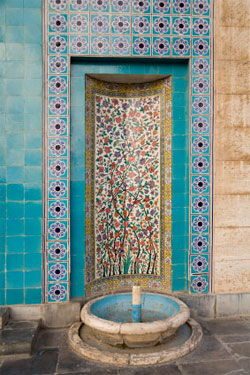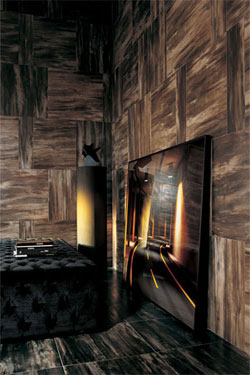Men have assembled armies, waged wars, and attempted conquests and lost their lives, all for the sake of tiling – it’s true. Sort of. In actuality, wars and conquests across the globe have influenced tile making and resulted in the epic rises and colossal downfalls of entire tile industries and dynasties.
While “mud men” – masons, actually – were crafting mud and stone tiles in the Holy Land back in biblical times, and terracotta tiles have been around since at least the days of ancient Greece, the real development and spread of a significant tile making movement came after the Islamic conquest of Persia. Decorative Persian tiles, hand painted, became highly valued and spread throughout the Islamic world. Many palaces, mosques and public buildings boasted incredibly detailed floor, wall and ceiling tiles that defined an entirely new decorative tradition.
Islamic conquests also helped to push tile making traditions into Spain and subsequently all of Europe. In the 11th century, the Arabs brought with them ceramic processes that helped revolutionize Spanish tile making. The Spanish took tile making to whole new level, enhancing their advanced artistic sensibilities with the utilization of new technologies such as intricate ceramic processes and specialized glazing techniques. The result: structures like the mosque of Seville, built in the 12th century and widely popular with travelers who would stop to admire its detailed tile work. Soon after, in the south of Spain, it became popular to pave paths and even roads with tiles, and the designs became progressively more complex with seemingly impossible geometric designs.


Tile: Then and Now
A few short centuries later, Spain’s occupation of the Netherlands would once again revolutionize tile making; this time among many other countries. The Eighty Years’ War, lasting from 1568-1648, was the period in which revolt broke out in the Netherlands against Spanish oppressors. The freedoms Dutch artisans once enjoyed became virtually nonexistent. Many tile makers left their homeland for neighboring countries so they could practice their craft without fear. Countries like Germany, Belgium and many others benefited from Dutch immigration, which allowed new tile making traditions to prosper in their country.
The last several centuries have seen the art and science of tile making flourish across the globe. Tiles from all over Europe, Asia, Africa and the Americas are popular for their unique manufacturing techniques and originality in designs. Technological advancements, including the ability to create “digital” tiles – tiles that have digitally manipulated images or photography transferred onto their surface under pressurized heat – allow tile artists to unleash their most creative ideas. The world of tiles is moving at an accelerated pace and in order to keep up with it, you definitely need to floor it!
Floor It! is the first in a series of posts about the exciting history of tiles. Stay tuned for the next installment about African tiles.

